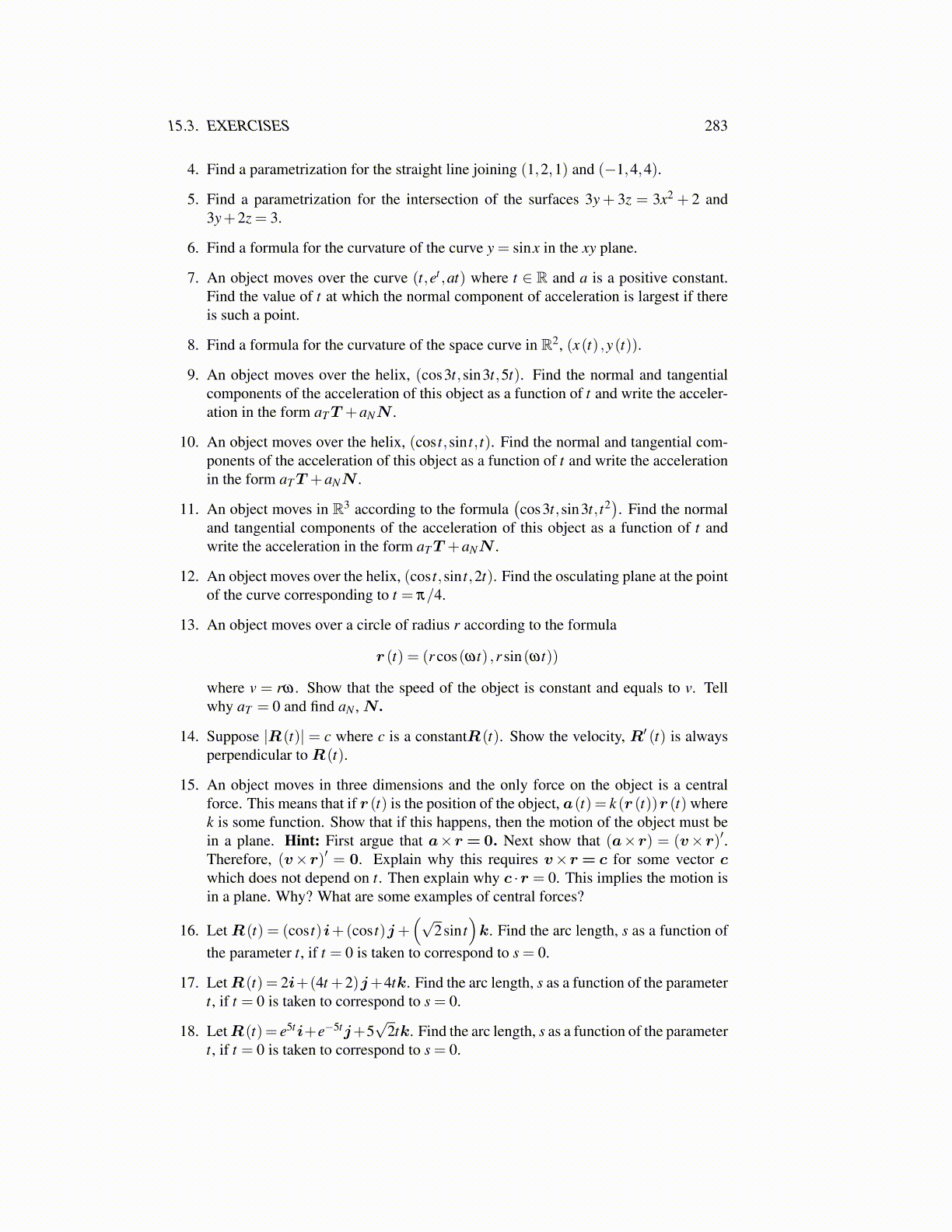
15.3. EXERCISES 283
4. Find a parametrization for the straight line joining (1,2,1) and (−1,4,4).
5. Find a parametrization for the intersection of the surfaces 3y + 3z = 3x2 + 2 and3y+2z = 3.
6. Find a formula for the curvature of the curve y = sinx in the xy plane.
7. An object moves over the curve (t,et ,at) where t ∈ R and a is a positive constant.Find the value of t at which the normal component of acceleration is largest if thereis such a point.
8. Find a formula for the curvature of the space curve in R2, (x(t) ,y(t)).
9. An object moves over the helix, (cos3t,sin3t,5t). Find the normal and tangentialcomponents of the acceleration of this object as a function of t and write the acceler-ation in the form aTT +aNN .
10. An object moves over the helix, (cos t,sin t, t). Find the normal and tangential com-ponents of the acceleration of this object as a function of t and write the accelerationin the form aTT +aNN .
11. An object moves in R3 according to the formula(cos3t,sin3t, t2
). Find the normal
and tangential components of the acceleration of this object as a function of t andwrite the acceleration in the form aTT +aNN .
12. An object moves over the helix, (cos t,sin t,2t). Find the osculating plane at the pointof the curve corresponding to t = π/4.
13. An object moves over a circle of radius r according to the formula
r (t) = (r cos(ωt) ,r sin(ωt))
where v = rω . Show that the speed of the object is constant and equals to v. Tellwhy aT = 0 and find aN , N.
14. Suppose |R(t)| = c where c is a constantR(t). Show the velocity, R′ (t) is alwaysperpendicular to R(t).
15. An object moves in three dimensions and the only force on the object is a centralforce. This means that if r (t) is the position of the object, a(t) = k (r (t))r (t) wherek is some function. Show that if this happens, then the motion of the object must bein a plane. Hint: First argue that a×r = 0. Next show that (a×r) = (v×r)′.Therefore, (v×r)′ = 0. Explain why this requires v×r = c for some vector cwhich does not depend on t. Then explain why c ·r = 0. This implies the motion isin a plane. Why? What are some examples of central forces?
16. Let R(t) = (cos t)i+(cos t)j+(√
2sin t)k. Find the arc length, s as a function of
the parameter t, if t = 0 is taken to correspond to s = 0.
17. Let R(t) = 2i+(4t +2)j+4tk. Find the arc length, s as a function of the parametert, if t = 0 is taken to correspond to s = 0.
18. Let R(t)= e5ti+e−5tj+5√
2tk. Find the arc length, s as a function of the parametert, if t = 0 is taken to correspond to s = 0.